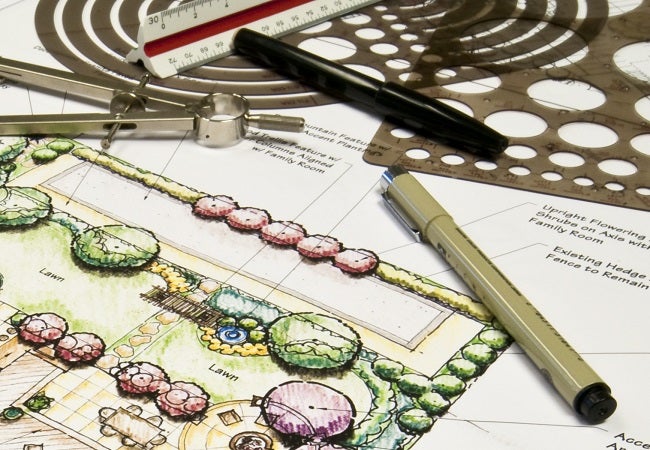Irrigation Design Tip:
Calculating Lateral Operating Time
There is an important reason for determining the average operating time for an irrigation system. Earlier in the design process the maximum irrigation requirement was determined in inches per day or per week for the type of climate at the project site.
Now we need to know if the circuits we are designing can meet this requirement in the time available for irrigation. If the time available for irrigation is limited, the type of sprinklers used, how they are circuited and the number of laterals that can run at the same time are critical concerns.
For example, a parks supervisor will want an irrigation system that completes the irrigation during certain times during the night.
The process for testing the adequacy of the system is to determine the daily watering time (in minutes) each circuit will need to satisfy the weekly irrigation requirement for the project. A simple formula applied to each type of circuit will help the designer determine the daily average operating time needed.

The formula looks like this: OT = (I x 60) / (PR x DA)
OT = Circuit operating time in minutes per day
I = System irrigation requirement in inches (millimeters) per week in the “worst case” season
PR = Circuit precipitation rate in inches (millimeters) per hour
DA = Days available for irrigation per week
60 = Constant conversion factor of 60 min/h
Let’s look at the formula in action on some sample circuits.
Sample lateral number 2
System irrigation requirement: 1-1/2 in (38 mm) per week
Days available for irrigation: 3 days
Sprinkler performance: 4.5 gpm (1 m3/h) full circle, radius = 40 ft (12 m)
Sprinkler spacing: 40 ft x 45 ft (12 m x 14 m) rectangular
First, if not previously calculated, determine the precipitation rate of the circuit.
Precipitation Rate
PR = (96.3 x 4.5 gpm) / (40 ft x 45 ft) = .24 in/h
PR = (1000 x 1 m3/h) / (12 m x 14 m) = 6 mm/h
Next, insert all the data into the formula and calculate the daily minutes of operating time for the circuit.
Circuit operating time
OT = (1.5 in/wk x 60 min/h) / (.24 in/h x 3 day/wk) = 125 min/day, 3 day/wk
OT = (38 mm/wk x 60 min/h) / (6 mm/h x 3 day/wk) = 126 min/day, 3 day/wk
Total operating time for the circuit: 125 min/day, 3 day/wk (or 126 min/day, 3 day/wk - the difference is caused by rounding during the International System Units calculation)
Adjusting the Circuit Operating Time
Once the operating time for each type of circuit is established, the next step is to add up all the circuits on the system and check this total against the hours of irrigation time available each day. The time period available for irrigation is called the water window.
The 125 min operating time above equals two hours and five minutes of running time per day for each circuit on the project similar to that one. What happens if there are 12 such circuits? If only one circuit can operate at a time, that means it takes 25-hour day to irrigate the project! Even if it wasn’t a day use area, there still are not enough hours in the day to complete a watering cycle.
A number of ways to resolve this problem are implied in the formula variables. The flow, irrigation days and precipitation rate are flexible and can provide solutions.
Perhaps two circuits cannot be run at one time, but maybe the hydraulics of the system would support higher flow rate sprinklers on each circuit. If 3 day/week for watering isn’t an imposed or valid restriction, more irrigation cycles per week would lessen the problem.
Let’s look at what happens if the system will support 7 gpm (1,6 m3/h) sprinklers instead of the 4.5 gpm (1 m3/h) sprinklers used previously.
Precipitation Rate
PR = (96.3 x 7 gpm) / (40 ft x 45 ft) = .38 in/h
PR = (1000 x 1,6 m3/h) / (12 m x 14 m) = 9,5 mm/h
Next, insert all the data into the formula and calculate the daily minutes of operating time for the circuit.
Circuit operating time
OT = (1.5 in/wk x 60 min/h) / (.38 in/h x 3 day/wk) = 78.9 min/day, 3 day/wk
OT = (38 mm/wk x 60 min/h) / (9,5 mm/h x 3 day/wk)= 80 min/day, 3 day/wk
For the 12 circuits on the system, it now takes about 15.8 hours.
If this is still too much time, let’s look at increasing the days available for watering to 6 days per week.
Circuit operating time
OT = (1.5 in/wk x 60 min/h) / (.38 in/h x 6 day/wk) = 39.4 min/day, 3 day/wk
OT = (38 mm/wk x 60 min/h) / (9,5 mm/h x 6 day/wk) = 40 min/day, 3 day/wk
40 min/station x 12 circuits = 8 hours irrigation time/cycle on the automatic irrigation controller
This example is somewhat simplified compared to a real-life situation where a number of other factors would require examination. We easily switched to higher flow sprinklers. A designer would have to check to make sure the increased precipitation rate did not exceed the soil’s rate of infiltration. The greater flow demand could require the designer to reduce the number of sprinklers per circuit or increase pipe sizes. These, and other considerations pertaining to the project, require review when making alterations of the system to match operating time to the time available for irrigation.
This tip was excerpted from Rain Bird's Irrigation Design Manual. For more on irrigation design, formulas and practice excercise download the manual.